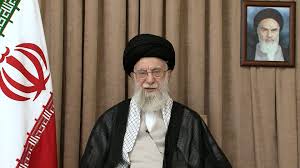
Introduction
Ali Khamenei, the Supreme Leader of Iran, holds immense power in one of the most geopolitically important regions of the world. With his authority spanning political, military, and religious aspects, Khamenei’s influence shapes not only Iran’s domestic policies but also its interactions with global powers. As 2023 progresses, understanding Khamenei’s role has never been more pertinent, especially in light of ongoing tensions surrounding Iran’s nuclear program and its involvement in regional conflicts.
Khamenei’s Political Influence
Since taking over the leadership from the late Ayatollah Ruhollah Khomeini in 1989, Khamenei has guided Iran through various crises, including economic sanctions and international diplomatic challenges. As protests erupted across Iran in recent years, sparked by economic distress and grievances against the government’s policies, Khamenei’s responses have been paramount. He has often framed the protests as attempts by foreign adversaries to destabilize the nation, which solidifies his base of support among hardliners in Iran.
Recent Developments
In the wake of the increasing unrest, Khamenei has maintained a firm grip on military support, evidenced by backing the Islamic Revolutionary Guard Corps (IRGC). This commitment has been crucial amid international scrutiny over Iran’s nuclear activities, particularly the Joint Comprehensive Plan of Action (JCPOA) negotiations that have seen fluctuating progress amidst a backdrop of mistrust. Despite hopes for a renewed agreement, recent statements from Khamenei suggest a hardline stance that may complicate diplomatic efforts.
Khamenei’s Vision for Iran
Ali Khamenei has often emphasized the idea of resistance against Western influence as a cornerstone of Iran’s governance. This narrative resonates strongly with elements of Iranian nationalism and religious leadership, appealing to citizens who view foreign interference as an existential threat. His speeches routinely frame regional allies, such as Hezbollah and the Houthis, as essential in countering what he describes as imperialist aggression. Consequently, his vision seems to prioritize a path of confrontational diplomacy rather than conciliatory measures.
Conclusion
The implications of Ali Khamenei’s leadership are significant not only for Iran but for global geopolitics. As the nation grapples with internal challenges and navigates complex international relations, Khamenei’s decisions will likely impact the course of events in the Middle East for years to come. Observers suggest that as Iran continues to strengthen its regional alliances while maintaining a firm stance on nuclear negotiations, the potential for increased tensions with Western nations remains high. Understanding Khamenei’s role is thus essential for grasping future developments in Iran and their repercussions worldwide.

